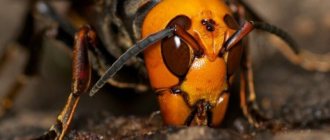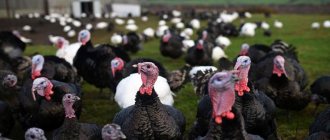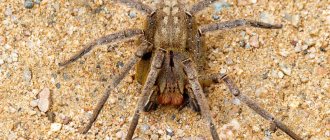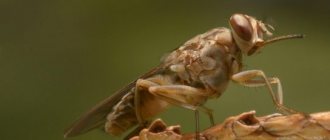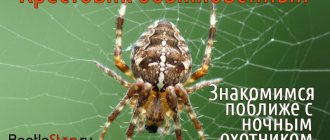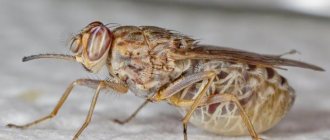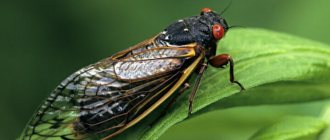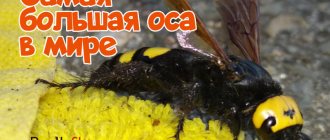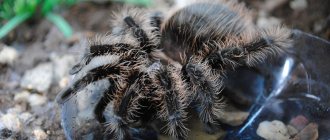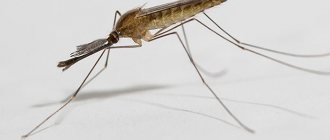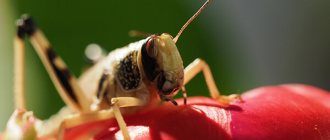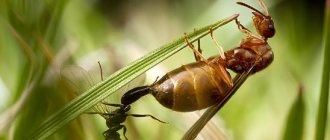Hares (genus Lepus), lagomorphs, are mammals that number about 30 species and belong to the same family as rabbits (Leporidae). The difference is that hares have longer ears and hind legs. The tail is relatively short, but slightly longer than that of rabbits. People often incorrectly apply the names hare and rabbit to specific species. Pikas, rabbits and hares make up the order of lagomorphs.
Hares are the largest lagomorphs. Depending on the species, the body is about 40–70 cm long, the legs up to 15 cm and the ears up to 20 cm, which appear to dissipate excess body heat. Typically gray-brown in temperate latitudes, hares living in the North molt and “put on” white fur in winter. In the Far North, hares remain white all year round.
Reproduction cycles of hares
One of the most dramatic ecological patterns known to zoologists is the breeding cycle of hares. Populations peak every 8–11 years and then plummet by a factor of 100. Predators are believed to be responsible for this pattern. Hunter populations correlate with prey populations, but with a time lag of one to two years. As the number of predators increases, the number of hares decreases, but due to the high level of hunting, the number of predators also decreases.
Once the hare population recovers, the number of predators increases again and the cycle repeats. Because hares are almost exclusively herbivores, they damage natural vegetation or crops when their populations are high. Like rabbits, hares provide people with food and fur and are part of hunting and, more recently, popular culture.
The biggest rabbit
Until 2010, the largest rabbit in the world was named Ralph. At that time, he was indeed considered the largest representative of rodents. But with the appearance of Darius, the champion lost his title. At that time he was four years old. Many predicted a grand comeback, which happened a few years later. Ralph recovered to 22 kg and again took the first step.
Today, the struggle between these two leaders continues. Both representatives are growing rapidly. They spend most of their time outdoors. Ralph's parents were also record holders, so he owes his parameters to genetics and, of course, an abundance of attention and care. The animal has a very good appetite.
Not everyone is able to feed the record holder. From a financial point of view, maintaining giants is unprofitable. But they are not raised for slaughter. You need to take care of your eared one carefully. During the molting period, you need to prepare for daily fur cleaning, but it is better to comb your pet in advance.
In fact, it is still unclear who still occupies the first position today. To accurately determine it is necessary to monitor each individual, and they go centimeter by centimeter. After the ban on registering records of this kind, society somewhat lost interest in Darius and Ralph.
The most interesting species of hares in the world
Brown hares (Lepus europaeus)
Adult hares are approximately the size of a domestic cat; there is no uniform standard for size and fur color. They have distinctive long ears and large hind feet that form the typical footprint of a hare in the snow. The hares that live in England are smaller than the European continental individuals. Females are larger and heavier than males. The topcoat is usually brown, tan, or greyish-brown, the belly and underside of the tail are pure white, and the tips of the ears and the top of the tail are black. The color varies from brown in summer to gray in winter. Long whiskers are visible on the nasal lips, muzzle, cheeks and above the eyes.
Brown hare – video
Antelope hares (Lepus alleni)
Size is a distinguishing feature; this is a large variety of hares. The ears are tall, averaging 162 mm in length, and are hairless except for white fur around the edges and tips. The lateral parts of the body (limbs, hips, croup) are gray with black tips on the hairs. On the ventral surface (chin, throat, belly, insides of the limbs and tail) the fur is gray. The upperparts are yellow/brown with small patches of black.
Antelope hares have many ways to cope with the heat. Fur is highly reflective and insulates the skin, eliminating heat buildup from the environment. When it gets cold, antelope hares reduce blood flow to their large ears, which reduces heat transfer.
Tolai hare (Lepus tolai)
There is no single color standard for these hares, and the shade depends on the habitat. The upperparts become dull yellow, pale brown or sandy gray with brownish or reddish stripes. The thigh area is buffy or gray. The head has pale gray or yellowish fur around the eyes, and this shade extends forward to the nose and back to the base of the long, black-tipped ears. The lower part of the body and sides are pure white. The tail has a wide black or brownish-black stripe on top.
Yellowish hare (Lepus flavigularis)
The fur of these hares is coarse, and their paws are well furred. The upperparts are a rich ocher color interspersed with black, and the back of the neck is adorned with a distinct stripe, adjacent to which are two narrow black stripes running back from the base of each ear. The ears are buff colored with whitish tips, the throat is yellowish, and the underparts and sides are white. The legs and hindquarters are pale whitish to gray, the tail is gray below and black above. In spring, the fur appears dull, the upper body becomes more yellowish, and the black stripes on the neck are visible only as black spots behind the ears.
Broom hare (Lepus castroviejoi)
The Spanish hare's fur is a mixture of brown and black with very little white on the upper body. The lower part of the body is all white. The top of the tail is black and the underside of the tail matches the body in white. The ears are brownish-gray and usually tipped with black.
Natural enemies of the brown hare
Photo: Large brown hare
The natural enemies of the hare have a huge influence on its population. In a year, predators are capable of destroying up to 12% of the total number of hares. This figure is directly dependent on the number of predators living in a particular area, as well as on the availability of other food and the number of hare themselves.
The most dangerous animals for hares:
- Foxes;
- wolves;
- lynx;
- dogs;
- cats;
- winged predators: eagles, eagle owls, hawks.
All that remains for the Russians is camouflage, running fast and confusing their tracks. The gray-brown color helps the hare hide not only among branches and fallen trees, but also in the middle of snowy plains. A cunning person can pretend to be a stump or a hummock covered with snow. Both speed and the ability to swim save hares - in the struggle for life, a hare can swim across a river.
Other types of hares
Subgenus Poecilolagus
American hare
Subgenus Lepus
Arctic hare
White hare
Subgenus Proeulagus
Black-tailed hare
White-sided hare
Cape hare
Bush hare
Subgenus Eulagos
Corsican hare
Iberian hare
Manchurian hare
curly hare
White-tailed hare
Subgenus Indolagus
Dark-necked hare
Burmese hare
Uncertain subgenus
Japanese hare
Where do representatives of the lagomorph species most often live?
Hares and rabbits are found almost throughout the world in a variety of environments, from dense forests to open deserts. But the habitat of hares is different from the habitat of rabbits.
Hares mainly live in open areas, where speed is a good adaptation for escaping predators. Therefore, they live in the arctic tundra, grasslands or deserts. In these open areas, they hide in bushes and among rocks, their fur camouflaging them with their surroundings. But hares in snowy regions and partly mountain and Manchurian hares prefer coniferous or mixed forests.
You will find rabbits in forests and areas with bushes, where they hide in vegetation or in burrows. Some rabbits live in dense tropical forests, while others hide among river bushes.
About hares
When it comes to hares, one always gets the idea that they are a very good-natured and fearful creature, but this is far from the case.
And there is no reason to call a hare “slanty”; this is a mistaken opinion of hunters; its eyes are no different from other animals.When communicating with a dog, a hare is able to adopt its habits; it can attack and even try to bite.
The running style in the form of looping is associated with a slightly asymmetrical development of the paws.
How lagomorphs escape from predators
Hares run away from predators and confuse hunters when they return. Rabbits take refuge in burrows. Therefore, hares travel considerable distances and have a wide range, while rabbits remain in close proximity to safe shelters in small areas. All lagomorphs use distress calls or strike the ground with their hind feet to warn of a predator.
A hare escapes from a lynx
Hares have keen hearing, but scent marking is another way of communication. They have scent glands on the nose, chin and around the anus.
Interaction between animals
There are several types of hares, but regardless of this, they all use the same danger warning system. When a threat approaches, they begin to squeak and intensively stomp their paws on the ground. This allows you to warn other hares about the danger in order to successfully avoid it.
What do lagomorphs eat?
All hares and rabbits are strictly herbivores. The diet includes green parts of plants, grasses, clover, cruciferous and complex plants. In winter, the diet includes dry twigs, buds, young tree bark, roots and seeds. In steppe regions, the winter diet consists of dry weeds and seeds. Most of all, hares like cultivated plants such as winter grains, rapeseed, cabbage, parsley and cloves. Hares and rabbits damage cereals, cabbage crops, fruit trees and plantations, especially in winter. Hares rarely drink; they take moisture from plants, but sometimes they eat snow in winter.
Features of reproduction
Lagomorphs live without pairs. During the mating season, males fight with each other, building a social hierarchy in order to gain access to females entering the estrous cycle. Hares reproduce quickly, producing several large litters each year. Bunnies are born completely covered in fur, with their eyes open, and jump within minutes of being born.
After birth, mothers feed their babies only once a day with nutritious milk. The litter size of hares and rabbits depends on geography and climate.
Description of the animal hare
The brown hare animal belongs to the class of mammals; it is a separate species belonging to the genus of large hares. Their colossal numbers are due to their highly developed and rapid reproductive function.
In order to significantly increase the population even at home, you will need only 2 individuals of opposite sexes.
